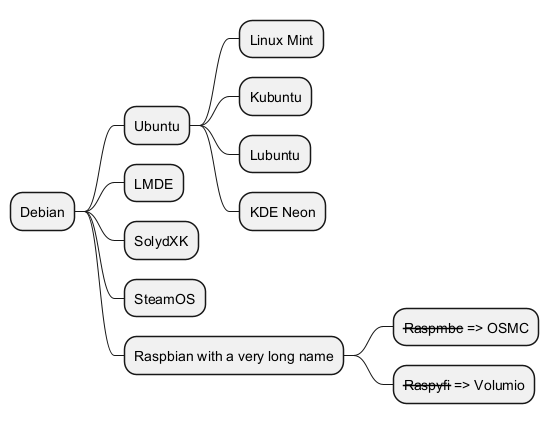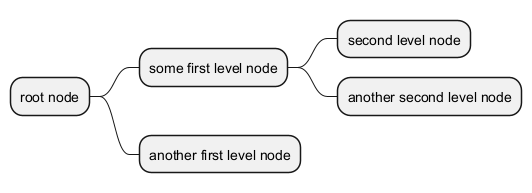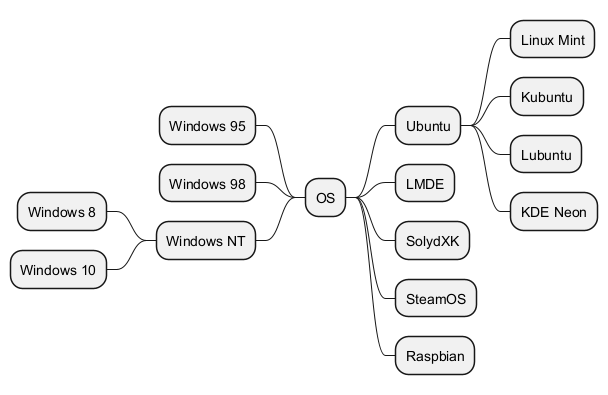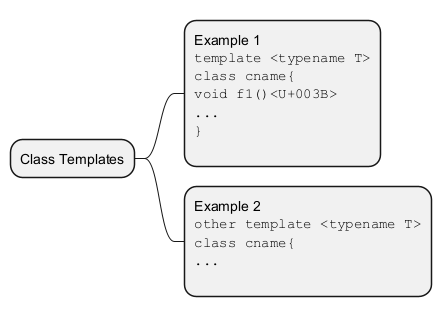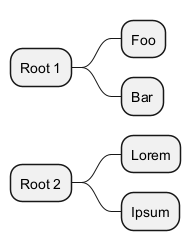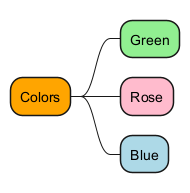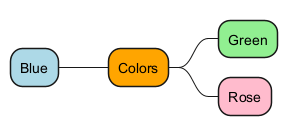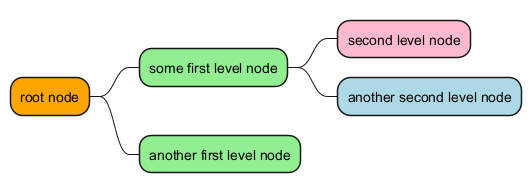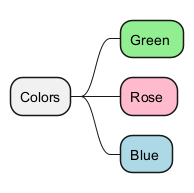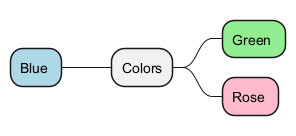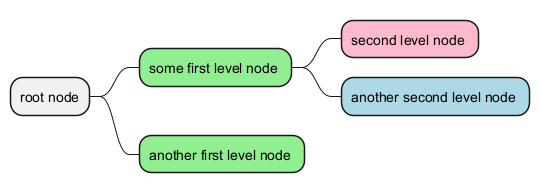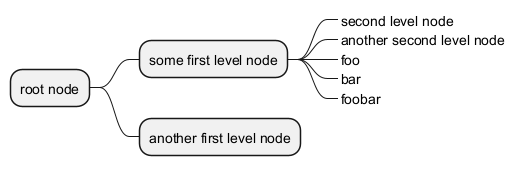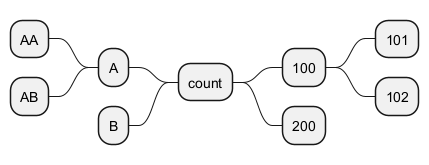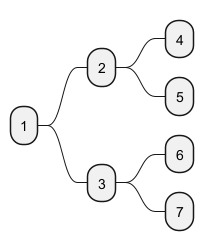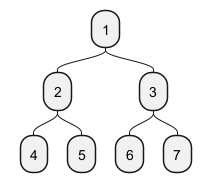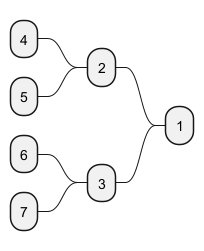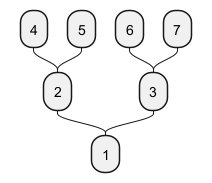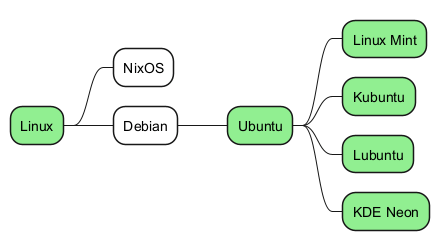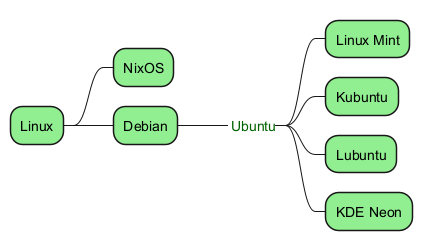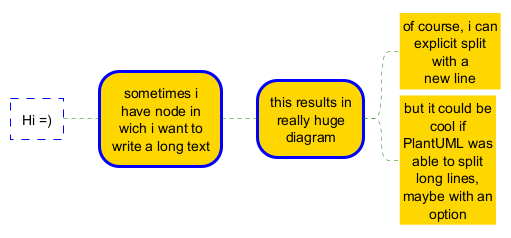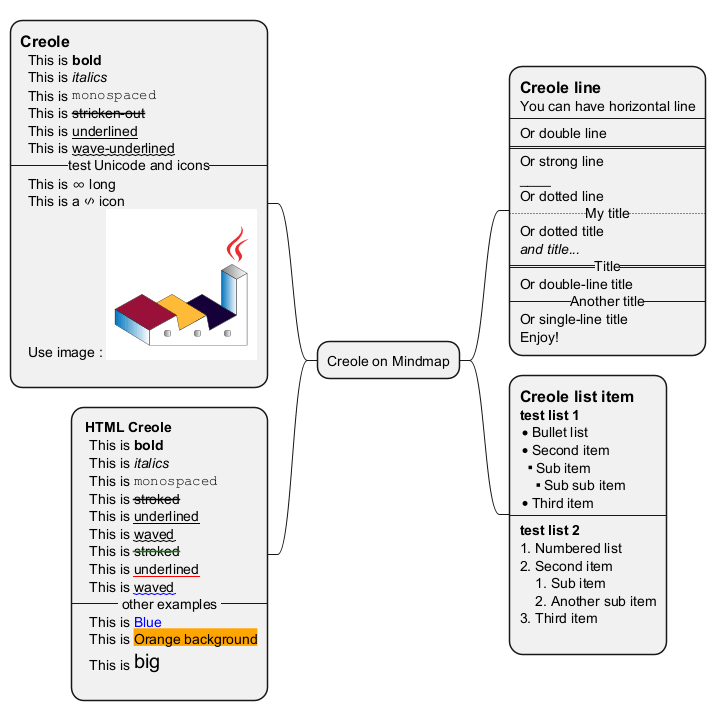Un
diagramme MindMap, dans le contexte de
PlantUML, est un outil efficace pour le
brainstorming, l'organisation des idées et la planification de projets. Les diagrammes MindMap, ou cartes heuristiques, sont des
représentations visuelles de l'information, où les idées centrales se ramifient en sujets connexes, créant une toile d'araignée de concepts. PlantUML facilite la création de ces diagrammes grâce à sa
syntaxe simple,
basée sur le texte, qui permet d'organiser et de visualiser efficacement des idées complexes.
L'utilisation de PlantUML pour les MindMaps est particulièrement avantageuse en raison de son
intégration avec d'autres outils et systèmes. Cette intégration rationalise le processus d'incorporation des cartes heuristiques dans la documentation d'un projet plus vaste. L'approche textuelle de PlantUML permet également de modifier facilement les cartes mentales et d'en
contrôler la version, ce qui en fait un outil dynamique pour le brainstorming collaboratif et le développement d'idées.
Les cartes mentales dans PlantUML peuvent être utilisées à des fins diverses, de l'esquisse de la structure d'un projet au brainstorming sur les caractéristiques d'un produit ou les stratégies commerciales. La
présentation hiérarchique et intuitive des cartes mentales permet d'identifier les relations entre différentes idées et concepts, ce qui facilite la vision d'ensemble et permet d'identifier les domaines qui nécessitent une exploration plus approfondie. PlantUML est donc un outil précieux pour les chefs de projet, les développeurs et les analystes commerciaux qui ont besoin d'une méthode pour organiser visuellement et présenter des informations complexes de manière claire et concise.
Cette syntaxe est compatible avec OrgMode
|
🎉 Copied!


|
@startmindmap
* Debian
** Ubuntu
*** Linux Mint
*** Kubuntu
*** Lubuntu
*** KDE Neon
** LMDE
** SolydXK
** SteamOS
** Raspbian with a very long name
*** <s>Raspmbc</s> => OSMC
*** <s>Raspyfi</s> => Volumio
@endmindmap
|
WARNING
This translation need to be updated. WARNING
La syntaxe Markdown est supportée.
|
🎉 Copied!


|
@startmindmap
* root node
* some first level node
* second level node
* another second level node
* another first level node
@endmindmap
|
WARNING
This translation need to be updated. WARNING
Vous pouvez utiliser la notation suivante pour orienter votre diagramme.
|
🎉 Copied!


|
@startmindmap
+ OS
++ Ubuntu
+++ Linux Mint
+++ Kubuntu
+++ Lubuntu
+++ KDE Neon
++ LMDE
++ SolydXK
++ SteamOS
++ Raspbian
-- Windows 95
-- Windows 98
-- Windows NT
--- Windows 8
--- Windows 10
@endmindmap
|
Le contenu multiligne des boîtes commence avec
: et finisse avec
;.
|
🎉 Copied!


|
@startmindmap
* Class Templates
**:Example 1
<code>
template <typename T>
class cname{
void f1()<U+003B>
...
}
</code>
;
**:Example 2
<code>
other template <typename T>
class cname{
...
</code>
;
@endmindmap
|
(Penser à échapper le ;, s'il apparait en fin de ligne intermédiaire dans le contenu, par exemple par son correspondant unicode <U+003B>)
WARNING
This translation need to be updated. WARNING
You can create multiroot mindmap, as:
|
🎉 Copied!


|
@startmindmap
* Root 1
** Foo
** Bar
* Root 2
** Lorem
** Ipsum
@endmindmap
|
[Ref. QH-773]
Il est possible de changer la
couleur des nœuds.
Avec couleur en ligne
|
🎉 Copied!


|
@startmindmap
*[#Orange] Colors
**[#lightgreen] Green
**[#FFBBCC] Rose
**[#lightblue] Blue
@endmindmap
|
- Syntaxe de la notation arithmétique mindmap
|
🎉 Copied!


|
@startmindmap
+[#Orange] Colors
++[#lightgreen] Green
++[#FFBBCC] Rose
--[#lightblue] Blue
@endmindmap
|
- Carte heuristique de la syntaxe Markdown
|
🎉 Copied!


|
@startmindmap
*[#Orange] root node
*[#lightgreen] some first level node
*[#FFBBCC] second level node
*[#lightblue] another second level node
*[#lightgreen] another first level node
@endmindmap
|
Avec couleur de style
- Carte mentale de syntaxe OrgMode
|
🎉 Copied!


|
@startmindmap
<style>
mindmapDiagram {
.green {
BackgroundColor lightgreen
}
.rose {
BackgroundColor #FFBBCC
}
.your_style_name {
BackgroundColor lightblue
}
}
</style>
* Colors
** Green <<green>>
** Rose <<rose>>
** Blue <<your_style_name>>
@endmindmap
|
- Cartographie de la syntaxe de la notation arithmétique
|
🎉 Copied!


|
@startmindmap
<style>
mindmapDiagram {
.green {
BackgroundColor lightgreen
}
.rose {
BackgroundColor #FFBBCC
}
.your_style_name {
BackgroundColor lightblue
}
}
</style>
+ Colors
++ Green <<green>>
++ Rose <<rose>>
-- Blue <<your_style_name>>
@endmindmap
|
- Carte heuristique de la syntaxe Markdown
|
🎉 Copied!


|
@startmindmap
<style>
mindmapDiagram {
.green {
BackgroundColor lightgreen
}
.rose {
BackgroundColor #FFBBCC
}
.your_style_name {
BackgroundColor lightblue
}
}
</style>
* root node
* some first level node <<green>>
* second level node <<rose>>
* another second level node <<your_style_name>>
* another first level node <<green>>
@endmindmap
|
[Ref. GA-920]
WARNING
This translation need to be updated. WARNING
Vous pouvez enlever les contours des boîtes en utilisant le caractère tiret bas (_), comme pour les
diagrammes de type WBS.
|
🎉 Copied!


|
@startmindmap
* root node
** some first level node
***_ second level node
***_ another second level node
***_ foo
***_ bar
***_ foobar
** another first level node
@endmindmap
|
|
🎉 Copied!


|
@startmindmap
*_ root node
**_ some first level node
***_ second level node
***_ another second level node
***_ foo
***_ bar
***_ foobar
**_ another first level node
@endmindmap
|
|
🎉 Copied!


|
@startmindmap
+ root node
++ some first level node
+++_ second level node
+++_ another second level node
+++_ foo
+++_ bar
+++_ foobar
++_ another first level node
-- some first right level node
--_ another first right level node
@endmindmap
|
Il est possible d'utiliser les deux côtés du diagramme.
|
🎉 Copied!


|
@startmindmap
* count
** 100
*** 101
*** 102
** 200
left side
** A
*** AA
*** AB
** B
@endmindmap
|
You can change (whole) diagram orientation with:
left to right direction (by default)top to bottom directionright to left directionbottom to top direction (not yet implemented/issue then use workaround)
Left to right direction (by default)
|
🎉 Copied!


|
@startmindmap
* 1
** 2
*** 4
*** 5
** 3
*** 6
*** 7
@endmindmap
|
Top to bottom direction
|
🎉 Copied!


|
@startmindmap
top to bottom direction
* 1
** 2
*** 4
*** 5
** 3
*** 6
*** 7
@endmindmap
|
Right to left direction
|
🎉 Copied!


|
@startmindmap
right to left direction
* 1
** 2
*** 4
*** 5
** 3
*** 6
*** 7
@endmindmap
|
Bottom to top direction
|
🎉 Copied!


|
@startmindmap
top to bottom direction
left side
* 1
** 2
*** 4
*** 5
** 3
*** 6
*** 7
@endmindmap
|
[Ref. QH-1413]
|
🎉 Copied!


|
@startmindmap
caption figure 1
title My super title
* <&flag>Debian
** <&globe>Ubuntu
*** Linux Mint
*** Kubuntu
*** Lubuntu
*** KDE Neon
** <&graph>LMDE
** <&pulse>SolydXK
** <&people>SteamOS
** <&star>Raspbian with a very long name
*** <s>Raspmbc</s> => OSMC
*** <s>Raspyfi</s> => Volumio
header
My super header
endheader
center footer My super footer
legend right
Short
legend
endlegend
@endmindmap
|
nœud, profondeur
|
🎉 Copied!


|
@startmindmap
<style>
mindmapDiagram {
node {
BackgroundColor lightGreen
}
:depth(1) {
BackGroundColor white
}
}
</style>
* Linux
** NixOS
** Debian
*** Ubuntu
**** Linux Mint
**** Kubuntu
**** Lubuntu
**** KDE Neon
@endmindmap
|
sans boîte
|
🎉 Copied!


|
@startmindmap
<style>
mindmapDiagram {
node {
BackgroundColor lightGreen
}
boxless {
FontColor darkgreen
}
}
</style>
* Linux
** NixOS
** Debian
***_ Ubuntu
**** Linux Mint
**** Kubuntu
**** Lubuntu
**** KDE Neon
@endmindmap
|
Le paramètre
MaximumWidth permet de contrôler le retour à ligne automatique. L'unité utilisée est le pixel
|
🎉 Copied!


|
@startmindmap
<style>
node {
Padding 12
Margin 3
HorizontalAlignment center
LineColor blue
LineThickness 3.0
BackgroundColor gold
RoundCorner 40
MaximumWidth 100
}
rootNode {
LineStyle 8.0;3.0
LineColor red
BackgroundColor white
LineThickness 1.0
RoundCorner 0
Shadowing 0.0
}
leafNode {
LineColor gold
RoundCorner 0
Padding 3
}
arrow {
LineStyle 4
LineThickness 0.5
LineColor green
}
</style>
* Hi =)
** sometimes i have node in wich i want to write a long text
*** this results in really huge diagram
**** of course, i can explicit split with a\nnew line
**** but it could be cool if PlantUML was able to split long lines, maybe with an option
@endmindmap
|
You can use
Creole or HTML Creole on Mindmap:
[Ref. QA-17838]
